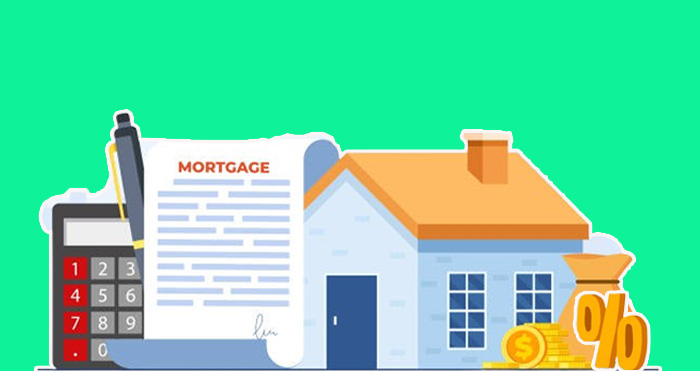Congratulations! You’ve found your dream home – a place to build memories, raise a family, or simply enjoy your own space. Now, it’s time to navigate the not-so-dreamy part of the home-buying process: securing a mortgage. As you explore loan options, you might come across the concept of “mortgage points.” But what exactly are they, and should you consider them for your dream home?

In essence, mortgage points are fees paid upfront to the lender to secure a reduced interest rate on your mortgage. Think of it like a pre-payment on interest. Each point typically reduces your interest rate by a specific amount, often around 0.25%. So, for example, buying two points might lower your interest rate by half a percent. The decision of whether or not to buy mortgage points can be a tricky one. There are definite advantages to be gained, but also some drawbacks to consider.
What are Mortgage Points?
Mortgage Points also known as discount points, are upfront fees paid directly to the lender in exchange for a lower interest rate on your mortgage. Think of it as a prepayment of interest. Typically, one point equals 1% of your total loan amount. For example, if your loan is for $300,000, one point would cost $3,000.
- Yield Spread Premium (YSP): Lenders don’t operate out of the goodness of their hearts; they aim to make a profit. The yield spread premium (YSP) is the difference between the mortgage rate you receive and the lender’s borrowing cost. By buying down the interest rate with points, you reduce the lender’s YSP. While this might seem disadvantageous to them, lenders often factor the potential for point sales into their overall profit margins.
Origination Fees vs. Mortgage Points
Imagine origination points as a service fee for your lender. They compensate the lender for the time and resources invested in processing your loan application, underwriting (evaluating your financial health), and closing the deal. Origination points are typically expressed as a percentage of your loan amount, with one point generally equaling 1% of the total loan value.
For instance, if your mortgage is for $300,000 and you pay one origination point, that translates to a fee of $3,000 ($300,000 x 1%). The number of origination points you’ll be charged can vary depending on your lender, loan type, creditworthiness, and overall market conditions.
Mortgage Points aka Discount points, on the other hand, offer a more strategic approach. By prepaying a portion of the interest on your loan upfront (in the form of points), you can secure a lower interest rate throughout the life of your mortgage. Think of it as an investment that pays off over time through reduced monthly payments.
Similar to origination points, discount points are also priced as a percentage of your loan amount. The exact impact on your interest rate will depend on your lender, but generally, one discount point can decrease your interest rate by around 0.25%. So, on a $300,000 loan, paying one discount point (which would cost $3,000) could potentially lower your interest rate by 0.25%.
Choosing the Right Path:
The decision to buy points hinges on your financial situation and goals. What to consider:
- Loan term: If you plan to stay in your home for a long period, the long-term savings from a lower interest rate (achieved through discount points) can be significant.
- Interest rate environment: When interest rates are high, discount points can be a more attractive option.
- Upfront cash: Paying points requires an upfront investment, so ensure you have the available funds without jeopardizing your financial stability.
How do Mortgage Points Work?
Let’s delve into the world of mortgage points and understand how they can affect your home loan. Mortgage points, or discount points, are interest payments made in advance to obtain a reduced mortgage interest rate. Essentially, you’re giving the lender a bit of extra cash upfront in exchange for a smaller interest payment each month over the life of your loan. This can be a strategic way to save money on interest in the long run, especially if you plan to stay in your home for a significant period.
- How mortgage points are calculated: One mortgage point is equivalent to 1% of your original loan amount. For instance, if your loan amount is $200,000, then one point would cost $2,000 (1% x $200,000). Most lenders allow you to buy fractions of points, so you can tailor the cost to your budget and desired interest rate reduction.
The cost of mortgage points with the loan amount:
The cost of mortgage points directly correlates to your loan amount. The higher the loan amount, the more expensive each point will be. Here’s a simple breakdown to illustrate this concept:
- Loan amount: $100,000
- Cost of 1 point: $1,000 (1% x $100,000)
- Cost of 2 points: $2,000 (2 x $1,000)
Example:
Imagine you’re taking out a $300,000 mortgage. You’re considering buying two points to bring down your interest rate by 0.25%. In this scenario, the two points would cost you $6,000 (2 points x $3,000 per point).
The Pros and Cons
Pros:
- Lower Monthly Payments: Imagine you qualify for a 30-year fixed-rate mortgage at 5% interest. On a $200,000 loan, your estimated monthly payment would be around $1,067 [sources for mortgage calculators readily available online]. By purchasing points upfront to bring your interest rate down to 4.5%, your monthly payment drops to roughly $1,028. That’s a difference of $39 each month, which adds up to over $14,000 saved throughout the loan term!
- Potential Long-Term Savings: The lower interest rate you secure with points translates to significant savings over the entire loan. A 0.5% reduction on a $200,000 mortgage can save you tens of thousands of dollars in total interest paid. This benefit becomes even more substantial with larger loan amounts.
- Locking in a Lower Rate: Interest rates are dynamic and can fluctuate. By buying points, you lock in a guaranteed lower rate. This is particularly advantageous in a rising interest rate environment, as it protects you from future hikes that could significantly increase your monthly payments.
Cons:
- Upfront Cost: Points are not free. They usually range from 1% to 3% of the loan amount. For example, with a $200,000 loan, 1 point would amount to $2,000. This requires a sufficient down payment to cover both the down payment itself and the additional cost of points.
- Break-Even Period: The cost of points needs to be offset by the monthly savings you achieve with a lower interest rate. This is called the break-even period. It typically takes a few years (2-4 years on average) to recoup the upfront cost of points through your lower monthly payments. If you plan to sell your home before the break-even period, you might not fully benefit from the points.
- Not Always the Best Option: Points might not be the most economical choice for everyone. If you plan to stay in your home for a short period (less than 5 years) or anticipate refinancing shortly, the break-even period might not be reached, making points less advantageous.
Mortgage Points: Calculating the Math
Before diving into the nitty-gritty, let’s establish a baseline. One mortgage point typically equals 1% of your loan amount. So, for a $200,000 mortgage, one point would cost $2,000. Now, the good news: each point you purchase usually reduces your interest rate by a specific amount. While this can vary slightly between lenders, a common reduction is 0.25% per point.
So, how much could you potentially save? There are two main approaches:
- Simplified Formula: This approach estimates your interest savings based on the point cost, loan amount, and interest rate reduction. Let’s say you’re considering buying two points on a $200,000 loan with an offered reduction of 0.25% per point. Here’s a simplified formula:
(Points purchased * Cost per point) / (Original interest rate / 12) = Estimated monthly interest savings
In this example:
(2 points * $2,000) / ((Original interest rate) / 12) = Estimated monthly interest savings
Important Note: This formula provides a starting point. It doesn’t account for factors like loan terms or private mortgage insurance (PMI).
- Online Calculators: Thankfully, numerous online mortgage point calculators can provide a more precise estimate. These tools factor in your loan amount, interest rate, desired points, and loan term to calculate potential monthly payment reductions and total interest savings over the loan duration.
Key Factors for Accurate Calculations
Now that you have a grasp of the basic formula and online calculators, let’s explore the three crucial factors that significantly impact your potential savings:
- Loan Amount: Higher loan amounts may increase the cost of points, but they can also lead to more significant interest savings.
- Interest Rate Reduction per Point: This varies by lender, so be sure to get quotes that specify the interest rate reduction offered per point. A higher reduction per point translates to greater potential savings.
- Loan Term: The longer your loan term, the more time you have to recoup the upfront cost of points through lower interest payments. So, for a 30-year loan, points might be more financially beneficial compared to a 15-year loan.
Remember: While mortgage point calculators are a valuable tool, it’s always wise to consult a mortgage professional. They can assess your specific financial situation, analyze different loan options with and without points, and help you make an informed decision that best suits your needs.
Conclusion
Mortgage points can be a powerful tool for reducing your interest rate and saving money on your home loan. However, remember that the best option depends on your circumstances. By carefully considering your financial situation, the current interest rate environment, and consulting with a qualified mortgage professional, you can make an informed decision about points and ultimately choose the best mortgage option for your dream home!
With careful planning and expert guidance, you can secure the keys to your dream home with a mortgage that fits your financial goals!

